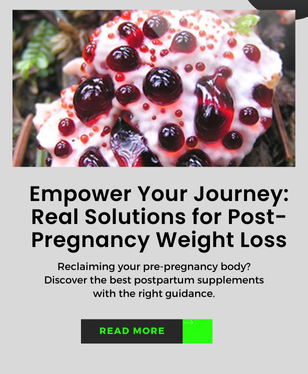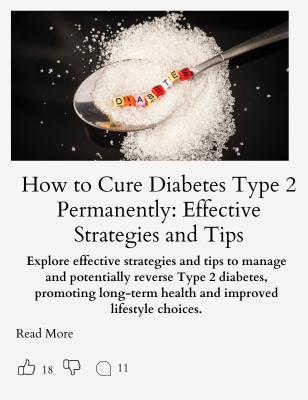A professional dental cleaning is essential for maintaining good oral health.
During this appointment, dental professionals remove plaque and tartar buildup, polish teeth, and provide fluoride treatments to protect enamel.
Many people wonder what to expect during this process and how it contributes to their overall health. Understanding these details can help individuals prioritize their dental care.
The cleaning usually starts with an examination of the teeth and gums. The dental hygienist checks for any signs of problems before starting the cleaning.
After this, they will use special tools to remove plaque and tartar, which are sticky bacteria that can harm the teeth if not taken care of. Lastly, the hygienist will polish the teeth and may also apply fluoride to strengthen them.
Regular dental cleanings not only improve oral health but also prevent serious issues down the line.
Keeping up with these appointments helps patients understand how to care for their teeth better. Engaging with a dental professional puts them on a path to long-lasting health.
Key Takeaways
- Professional cleanings remove harmful plaque and tartar.
- Routine visits educate patients on maintaining oral health.
- Preventive care is vital for overall health and wellness.
Understanding Dental Cleaning
Dental cleaning is an important part of maintaining oral health. It involves both procedures and benefits that contribute to a bright smile and healthy teeth.
Types of Dental Cleanings
There are several types of dental cleanings, each serving a specific purpose. The most common is routine dental cleaning, which usually occurs every six months.
This cleaning focuses on removing plaque, tartar, and stains from the teeth.
Another type is deep cleaning, often called scaling and root planing. This is more intensive and is used for patients with gum disease. It targets bacteria and deposits below the gum line.
Preventive care is also important. This includes fluoride treatments and dental sealants to protect teeth from cavities. Each type of cleaning is essential for different oral health needs.
Benefits of Regular Teeth Cleanings
Regular teeth cleanings provide many benefits.
First, these cleanings help prevent cavities and gum disease. By removing plaque and tartar, they reduce the chance of tooth decay.
Another advantage is fresher breath. Clean teeth contribute to better overall oral hygiene, making breath smell better.
Regular cleanings also allow the dentist to check for early signs of more serious issues, such as oral cancer or tooth grinding. This can lead to timely treatment and improved overall health.
The Role of Dental Professionals
Dental professionals play a key role in maintaining oral health. They work together to provide thorough care during visits for professional cleaning and checkups.
The Duties of a Dentist
A dentist leads the dental team and is responsible for diagnosing oral health issues. They conduct comprehensive examinations of the teeth and gums.
During an appointment, they check for cavities, gum disease, and other problems.
The dentist also develops a treatment plan tailored to the patient’s needs. They perform procedures like fillings, extractions, and root canals when necessary. Education is another important duty. Dentists inform patients about proper oral hygiene and preventive care practices.
In addition, they keep detailed records of each patient’s history and treatments. This helps track progress and makes future visits more effective.
The Dental Hygienist’s Responsibilities
The dental hygienist plays a vital role in preventing oral disease. They perform routine teeth cleaning, which removes plaque, tartar, and stains. This process helps reduce the risk of cavities and gum disease.
During checkups, hygienists also take X-rays to assist the dentist in evaluating dental health. They measure gum depth and check for signs of periodontal disease.
Education is another primary responsibility. Hygienists teach patients about brushing, flossing, and diet choices that support oral health. They provide personalized tips to improve daily care routines.
Their work ensures that patients leave with a cleaner mouth and better knowledge of maintaining their dental health.
Pre-Cleaning Examination
Before a dental cleaning, the dentist performs a pre-cleaning examination to assess oral health. This process includes an initial examination and may involve taking dental X-rays to look for issues beneath the surface.
Initial Examination and Consultation
The initial examination is a vital part of preparing for a dental cleaning. The dentist or hygienist checks for signs of tooth decay, gum disease, and any other oral health issues.
Patients are asked about their dental history and any concerns they may have. This information helps tailor the cleaning to individual needs. The team also assesses the current condition of teeth and gums.
Any findings during this exam guide the cleaning process and determine any necessary treatments. This step ensures a comprehensive approach to maintaining dental health.
Importance of Dental X-Rays
Dental X-rays are crucial for identifying hidden problems. They provide images of teeth, roots, and bone structure.
X-rays can reveal cavities not visible during a visual exam. They help detect issues like gum disease, abscesses, or impacted teeth.
Taking X-rays allows the dentist to create a complete picture of the patient’s oral health. This information aids in planning appropriate treatments during and after the cleaning. Patients should feel comfortable discussing any concerns about X-rays, as the process is safe and quick.
Plaque and Tartar Removal
During a professional dental cleaning, removing plaque and tartar is crucial. Plaque is a soft, sticky film that forms on teeth. If not cleaned properly, it hardens into tartar. This section explains the tools and processes used for their removal.
Using a Scaler for Tartar Removal
A scaler is an important tool in dental cleanings. It can be manual or ultrasonic.
The manual scaler has a pointed end that helps scrape off tartar from teeth.
An ultrasonic scaler uses vibrations and water spray to break down tartar. The tip gently pulses, making it more effective.
The dental hygienist moves the scaler along the tooth surface, effectively removing stubborn tartar.
Both methods are safe and usually involve a light pressure. Patients may feel some vibrations or hear a noise during this process, but it is generally not painful.
Scaling and Root Planing Process
Scaling and root planing is a deep cleaning process. It targets both above and below the gum line.
Scaling removes plaque and tartar from the surfaces of the teeth.
Root planing smoothens the tooth roots. This helps gums reattach to teeth, reducing spaces where bacteria can enter. The hygienist may use local anesthesia for comfort during this process.
The entire scaling and root planing procedure may take longer than a standard cleaning, especially if there is significant buildup. Regular cleanings help prevent the need for this deeper cleaning.
Teeth Polishing
Teeth polishing is an essential part of a dental cleaning. It helps remove surface stains and leaves the teeth feeling smooth and shiny. Two main components of this process are the prophy cup and prophylaxis paste.
Prophy Cup and Prophylaxis Paste
The dental hygienist uses a prophy cup for polishing. This special tool is soft and rubbery, allowing it to fit snugly against the teeth. The cup spins at a high speed to effectively polish each tooth surface.
Prophylaxis paste is a gritty, flavored toothpaste used during this process. It helps remove plaque and stains while providing a refreshing taste. The combination of the prophy cup and prophylaxis paste ensures that teeth remain clean and healthy.
Removing Surface Stains for a Brighter Smile
Polishing specifically targets surface stains that can dull the appearance of teeth. These stains often come from foods, drinks, or habits like smoking. The polishing process is gentle yet effective in reducing these blemishes.
After polishing, teeth appear brighter and feel smoother. Patients often notice an immediate difference in how their teeth look. Regular polishing contributes to maintaining a bright smile while promoting overall dental health.
Flossing and Rinsing
Flossing and rinsing are essential parts of a professional dental cleaning. These steps help remove plaque and food particles from areas that brushing may miss. Proper techniques and products play a significant role in achieving effective results.
Flossing Techniques and Best Practices
Flossing is important for maintaining oral health. During a dental cleaning, professionals may use dental floss or water flossers. The goal is to remove debris from between the teeth and under the gumline.
Techniques for Effective Flossing:
-
Use Enough Floss: About 18 inches is ideal. Wrap the ends around the middle fingers.
-
Gentle Motion: Slide the floss gently between the teeth without forcing it.
-
Curved Shape: Curve the floss around each tooth in a “C” shape. This helps clean both sides effectively.
-
Do Not Skip: Floss all teeth, including the back molars.
Regular flossing helps prevent gum disease and cavities by targeting areas that a toothbrush cannot reach.
The Significance of Rinsing
Rinsing is another critical step. It helps remove any remaining debris and bacteria after flossing. A good rinse can also freshen breath and enhance oral hygiene.
Benefits of Rinsing:
-
Types of Rinses: Professionals may recommend fluoride rinses or antibacterial mouthwash. These can help strengthen teeth and reduce plaque buildup.
-
Timing: Rinsing after flossing ensures that any loosened particles wash away.
-
Duration: A good rinse lasting 30 seconds can be more effective.
Rinsing should be part of a daily oral care routine, along with brushing and flossing. Together, these steps improve dental health and enhance overall well-being.
Fluoride Treatment
Fluoride treatment is a common part of professional dental cleanings. It helps strengthen teeth and prevent decay. One way to apply fluoride is through a fluoride varnish.
Application of Fluoride Varnish
Fluoride varnish is a sticky substance applied to the teeth. The dentist or dental hygienist paints it on the tooth surfaces. It hardens quickly upon contact with saliva.
This varnish releases fluoride over time, which helps to strengthen the enamel. Enamel is the outer layer of teeth that protects them.
The application process is simple and takes just a few minutes. Patients may feel a slight taste but usually do not find it uncomfortable.
After application, it is advised to avoid eating or drinking for at least 30 minutes to allow the fluoride to work effectively.
Educating Patients
Patients can learn how to keep their teeth and gums healthy through professional cleaning sessions. Dentists focus on improving at-home oral hygiene and providing personalized recommendations to address each patient’s unique needs.
Improving At-Home Oral Hygiene
Good oral hygiene starts at home. Proper brushing techniques are crucial.
Patients should use a soft-bristled toothbrush and fluoride toothpaste.
Brushing twice a day for at least two minutes helps remove plaque. The use of electric brushes can enhance cleaning effectiveness. They often provide consistent pressure and timing, making brushing easier.
Flossing daily is also key. Floss helps remove food particles and plaque from between teeth where a brush can’t reach.
A balanced diet rich in vitamins can support oral health as well. Limiting sugary snacks and drinks can prevent cavities and other dental problems.
Professional Recommendations
During appointments, the dentist assesses each patient’s teeth and gums. They can give tailored advice based on individual needs.
Often, dentists suggest a dental care routine that includes specific products. For example, they may recommend antibacterial mouthwash to reduce plaque buildup.
Regular check-ups are also important. Dentists can identify early signs of problems such as cavities or gum disease.
Scheduling cleanings every six months helps maintain oral health and catch issues early.
Using these strategies can lead to better results. Patients are encouraged to ask questions during their visits to fully understand their oral care.
Post-Cleaning Care and Follow-Up
After a professional dental cleaning, proper care is essential. This helps manage any discomfort and ensures the teeth stay healthy for longer.
Scheduling the next visit is also important for maintaining oral health over time.
Addressing Sensitivity After Cleaning
It is common for patients to experience some sensitivity after a dental cleaning. This can happen due to the removal of plaque and tartar, which sometimes exposes the tooth surface.
To help with sensitivity, consider these tips:
- Avoid Hot or Cold Foods: Steer clear of foods that are too hot or too cold for at least 24 hours.
- Use Sensitive Toothpaste: Choosing a toothpaste designed for sensitive teeth can provide relief.
- Limit Acidic Foods: Foods like citrus fruits and soda can worsen sensitivity. Try to minimize their intake right after cleaning.
If sensitivity lasts longer than a few days, it is advisable to contact the dentist. They can determine if further treatment is needed to address any issues.
Scheduling the Next Appointment
Regular dental visits are a key part of maintaining oral health. After a cleaning, it is a good idea to schedule the next appointment as recommended by the dentist.
Typically, this is every six months, but some may need to come more frequently due to specific oral health concerns.
To make scheduling easier:
- Check Dental Insurance: Confirm coverage for regular cleanings to avoid unexpected costs.
- Set Reminders: Use a calendar or phone alerts to keep track of appointments.
By staying on top of dental visits, patients can prevent oral diseases and maintain a healthy smile.
The Connection Between Oral and Overall Health
Oral health plays a crucial role in overall health. There are strong links between dental issues and serious conditions like heart disease and diabetes. Poor oral health can lead to other problems that affect well-being.
Linking Oral Health to Heart Disease and Diabetes
Gum disease, also known as periodontal disease, has a significant connection to heart disease. When bacteria from the mouth enter the bloodstream, they can cause inflammation and lead to heart problems.
This relationship means that individuals with gum disease have a greater risk of heart disease.
Similarly, diabetes and oral health are interconnected. High blood sugar can lead to dry mouth and increased risk of infection. Tooth decay and gum disease can also make it harder to control blood sugar levels.
Managing oral health is essential for people with diabetes to prevent complications.
Impact of Oral Health on Overall Well-Being
Good oral health contributes to overall well-being. Issues like bad breath and tooth decay can affect self-esteem and social interactions.
When a person feels embarrassed about their breath or dental appearance, it can lead to withdrawal from social situations.
Tooth loss, often resulting from untreated gum disease, impacts nutrition. People may avoid healthy foods if they cannot chew properly.
This can lead to poor dietary choices and additional health issues.
Regular dental cleanings can help maintain oral health and support overall well-being. Taking care of teeth and gums is vital for a healthier life.
Frequently Asked Questions
What should I expect when I undergo a dental cleaning?
During a dental cleaning, a dental hygienist will check your mouth and teeth. They will remove plaque and tartar buildup, polish your teeth, and may provide education on oral care.
Can a professional dental cleaning be painful?
Most people do not find dental cleanings painful. Some may feel slight discomfort, especially if they have sensitive teeth or gums. Dentists can offer numbing agents for those who are anxious or uncomfortable.
How long should a typical dental cleaning session last?
A typical dental cleaning session lasts about 30 to 60 minutes. The time can vary based on the individual’s oral health and any additional treatments needed.
What are the different steps involved in a professional teeth cleaning process?
The process usually starts with a dental examination. Next, the hygienist will use special tools to remove plaque and tartar. After that, they will polish the teeth and may apply fluoride treatment.
How often should I get my teeth professionally cleaned?
Most dental professionals recommend getting teeth cleaned every six months. Some individuals may need more frequent cleanings based on their oral health.
Are there any risks or disadvantages associated with professional teeth cleaning?
While professional cleanings are generally safe, some people may experience mild gum irritation or sensitivity afterward.
There is a small risk of infection if proper hygiene is not followed.















